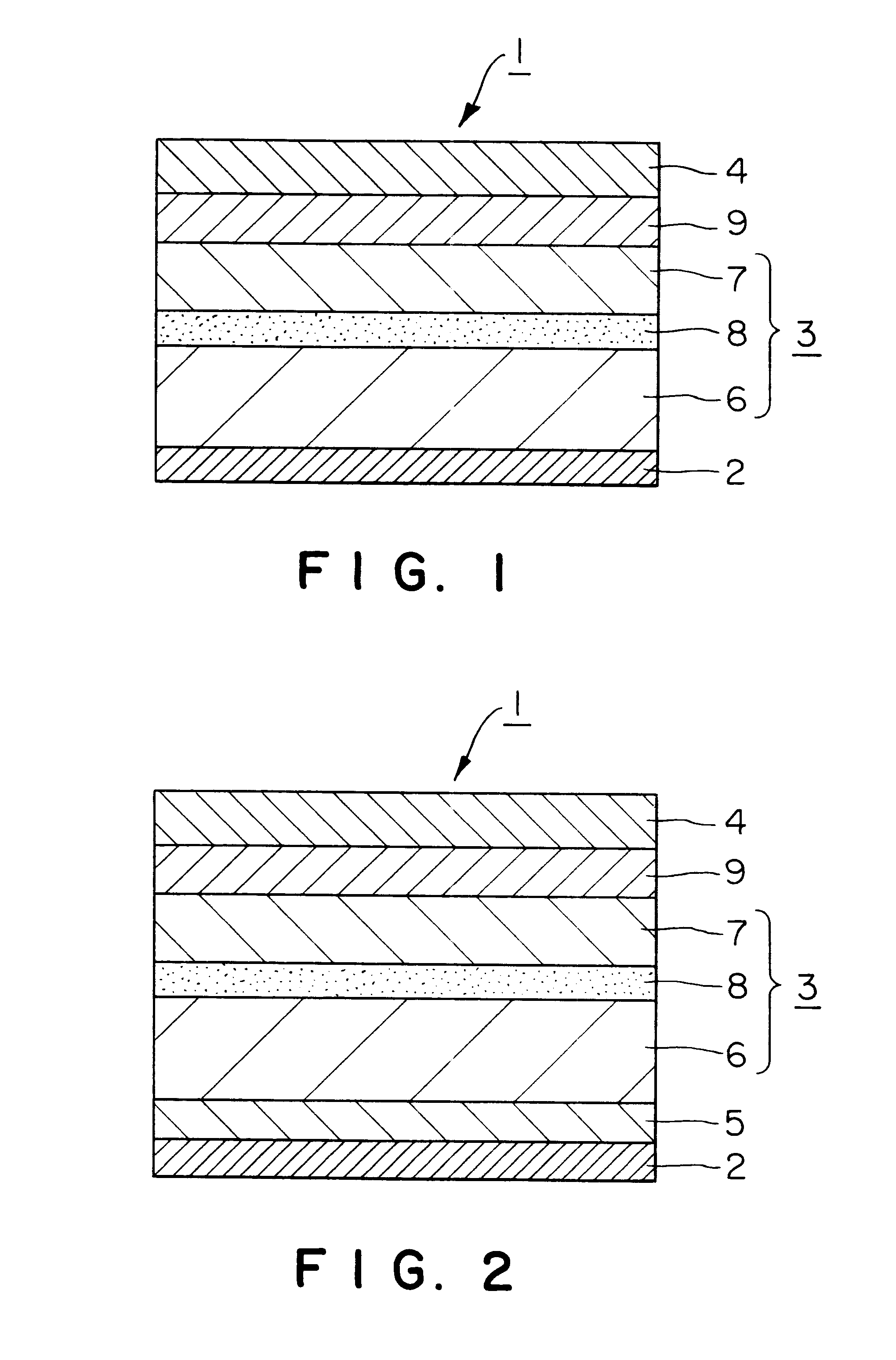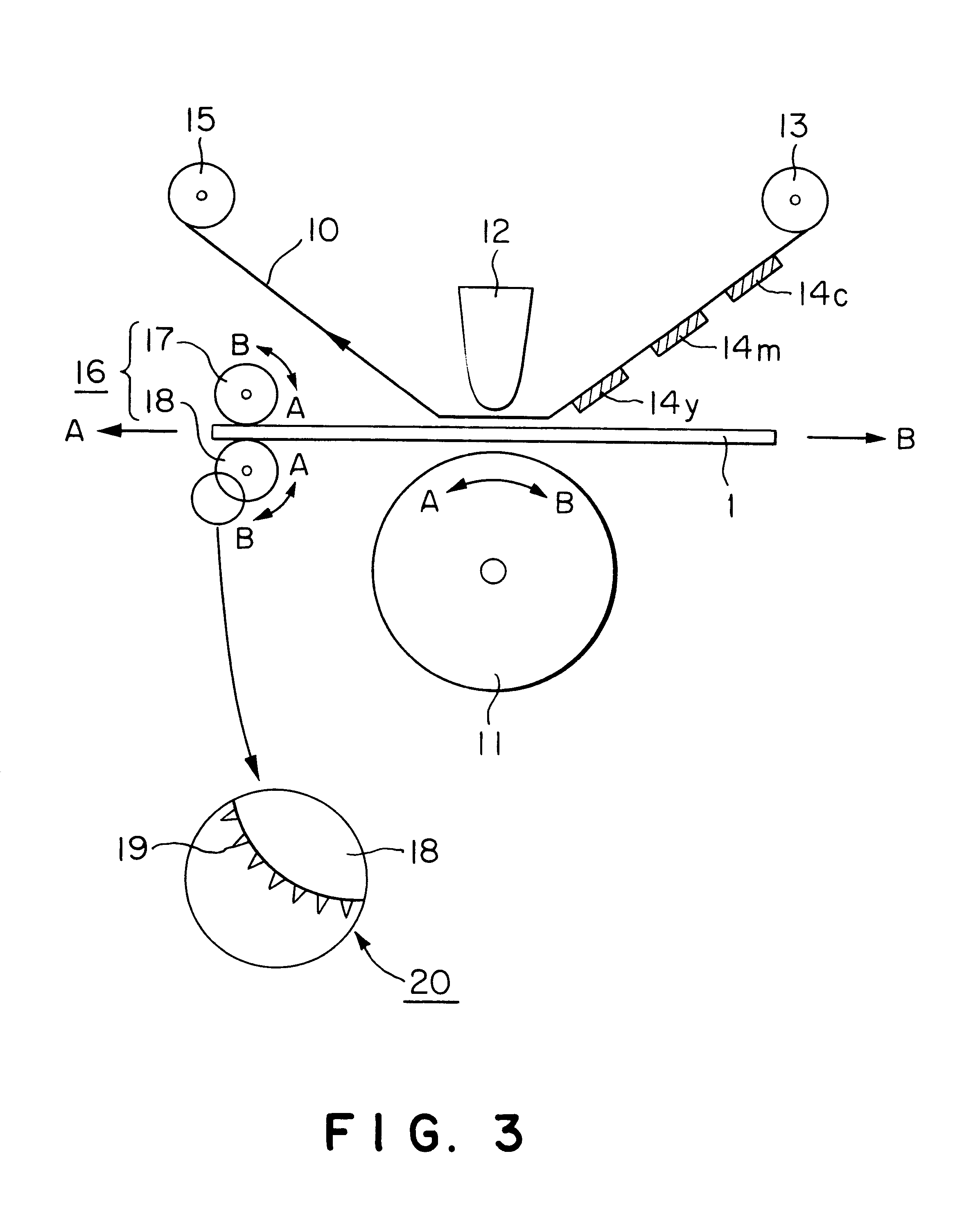Thermal transfer image receiving sheet
- Summary
- Abstract
- Description
- Claims
- Application Information
AI Technical Summary
Benefits of technology
Problems solved by technology
Method used
Image
Examples
example 2
In the thermal transfer image receiving sheet of Example 1, the following polyethylene resin layer was formed between the substrate and the grip layer. The resin for the grip layer was the same as that used in Example 1. A high-density polyethylene resin was used for the polyethylene resin layer. In this case, the grip layer and the polyethylene resin layer were formed by coextrusion lamination through a multi-manifold head so as to give a total thickness of 33 .mu.m. At that time, the thickness of the polyethylene resin layer was 14 .mu.m, while the thickness of the grip layer (unstretched polypropylene resin layer) was 19 .mu.m. Other conditions were the same as those in Example 1. Thus, a thermal transfer image receiving sheet of Example 2 was prepared.
Polyethylene resin layer
High-density polyethylene resin (Jayrex LZO 139-5)
example 3
The procedure of Example 1 was repeated, except that the thickness of the microvoid film constituted by the microvoid layer was changed to 35 .mu.m, the grip layer was formed using an unstretched synthetic resin layer of the following medium-density polyethylene resin in a thickness of 33 .mu.m on the coated paper (127.9 g / m.sup.2) as the support by extrusion lamination. Thus, a thermal transfer image receiving sheet of Example 3 was prepared.
Grip layer
Medium-density polyethylene resin (Sumikathene L5721, manufactured by Sumitomo Chemical Co., Ltd.)
example 4
The procedure of Example 2 was repeated, except that the basis weight of the coated paper as the support was changed to 157 g / m.sup.2. Thus, a thermal transfer image receiving sheet of Example 4 was prepared.
PUM
| Property | Measurement | Unit |
|---|---|---|
| Angle | aaaaa | aaaaa |
| Softening point | aaaaa | aaaaa |
| Time | aaaaa | aaaaa |
Abstract
Description
Claims
Application Information
 Login to View More
Login to View More - R&D
- Intellectual Property
- Life Sciences
- Materials
- Tech Scout
- Unparalleled Data Quality
- Higher Quality Content
- 60% Fewer Hallucinations
Browse by: Latest US Patents, China's latest patents, Technical Efficacy Thesaurus, Application Domain, Technology Topic, Popular Technical Reports.
© 2025 PatSnap. All rights reserved.Legal|Privacy policy|Modern Slavery Act Transparency Statement|Sitemap|About US| Contact US: help@patsnap.com



